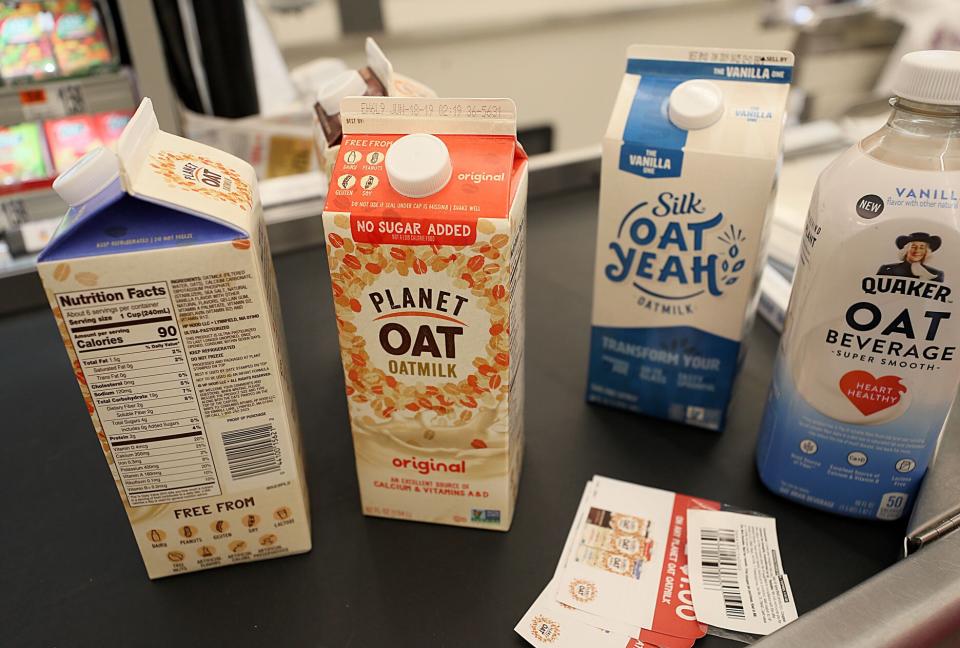People Are Stocking Up on Oat Milk Because of Coronavirus

Increasing reports of coronavirus have caused U.S. consumers to start gathering supplies as a precaution. There have been long lines at supermarkets and stores like Costco, with non-perishable foods including powdered milk, grains, and dried beans in high demand. Now, Bloomberg is reporting that one non-dairy product has been unexpectedly popular, too.
According to a report Nielsen released on March 2, oat milk sales rose 305.5 percent over a one-week period last month. The product topped a chart that lays out sales of “shelf-stable consumer-packaged goods” in the U.S. during the "period ended Feb. 22, 2020." For reference, items like water and first aid kits, which you’d expect to be pretty high on the list, only saw 5.1 and 6.2 percent growth, respectively. It’s all part of what the company refers to as “pandemic pantry preparations.”
“[Consumers are] also starting to think beyond emergency items, such as basic foodstuffs, including canned goods, flour, sugar and bottled water,” the first paragraph of the report explained. “Concerns are having a ripple effect into non-food essentials as well. In the U.S., sales of supplements, fruit snacks and first aid kits, for example, are all on the rise.”

Boston Globe/Getty Images
Below oat milk on the 10-item chart, fruit snacks came next at 12.6 percent, followed by pet medicine (11 percent), dried beans (10.1 percent), energy beverages (10.1 percent), bath and shower wipes (9.5 percent), pretzels (9 percent), supplements (7.8 percent) and first aid kits and water. The fact that oat milk experienced such a comparatively large surge is surprising. (Then again, there was an Oatly shortage in 2018 because it was so popular.) Nielsen also found that food items including baby food, prepared food dry mixes, and dry vegetables and grains were likely to be bought in conjunction with hand sanitizer. You can view the full findings in the report.
If you’re wondering how to stock your own kitchen in case of a local outbreak, we've compiled a helpful guide with advice from emergency preparedness expert Joshua Piven, co-author of the Worst-Case Scenario series, and Lori Uscher-Pines, a senior policy researcher at the RAND Corporation and author of "Citizen Preparedness for Disasters: Disaster Medicine and Public Health Preparedness.” Their key tips include preparing a two-week supply of food, making sure you have enough protein (from nuts and nut butter in the pantry to eggs and frozen meat), and of course, keeping enough non-perishables on hand, too.

